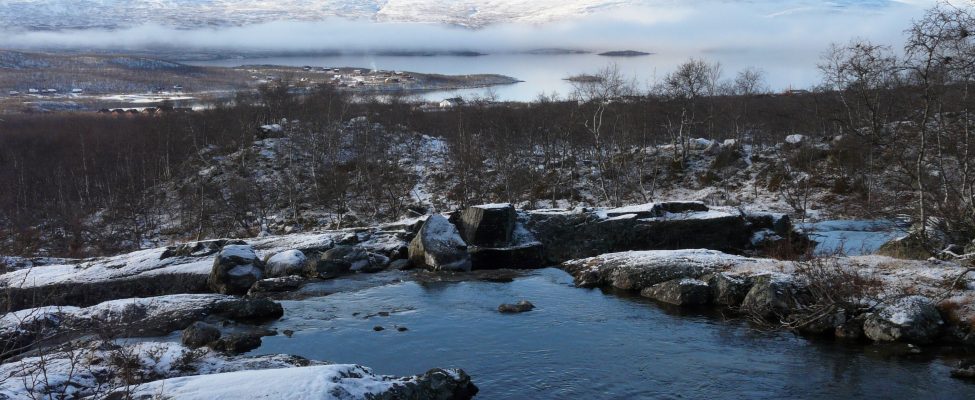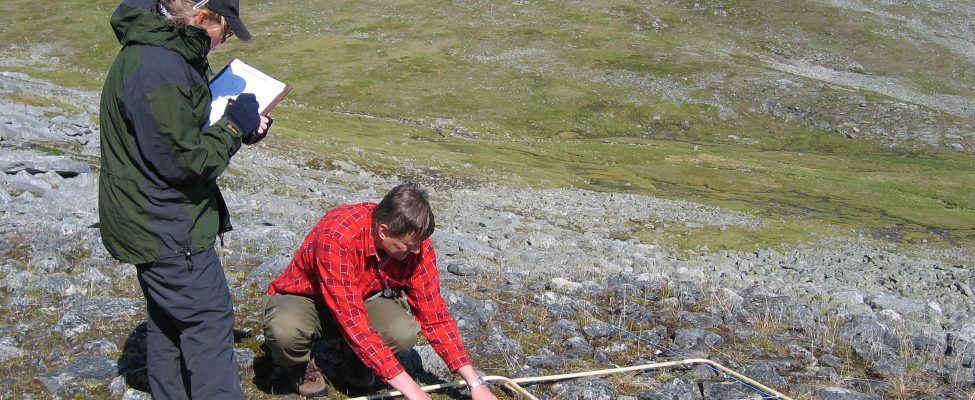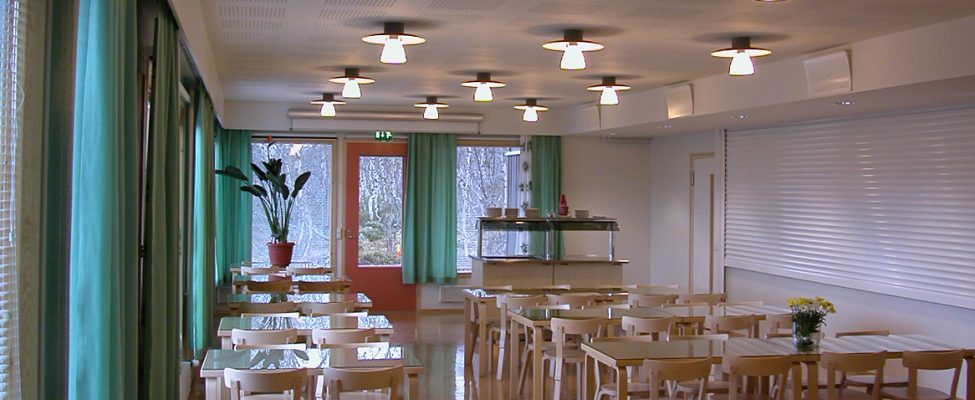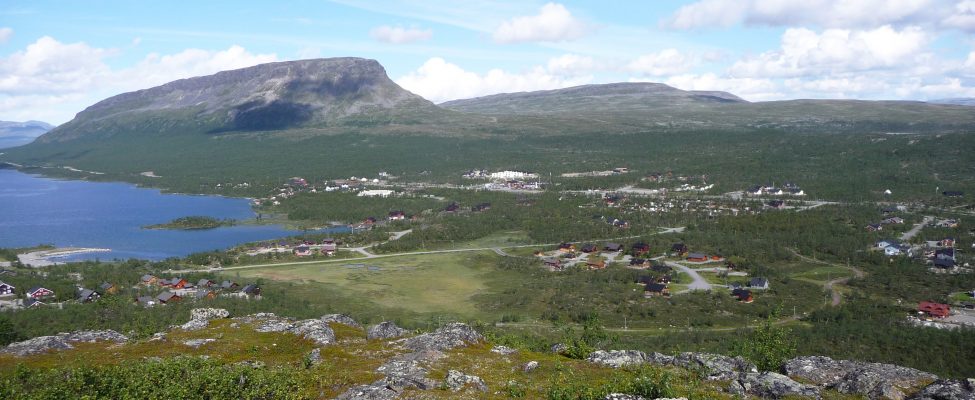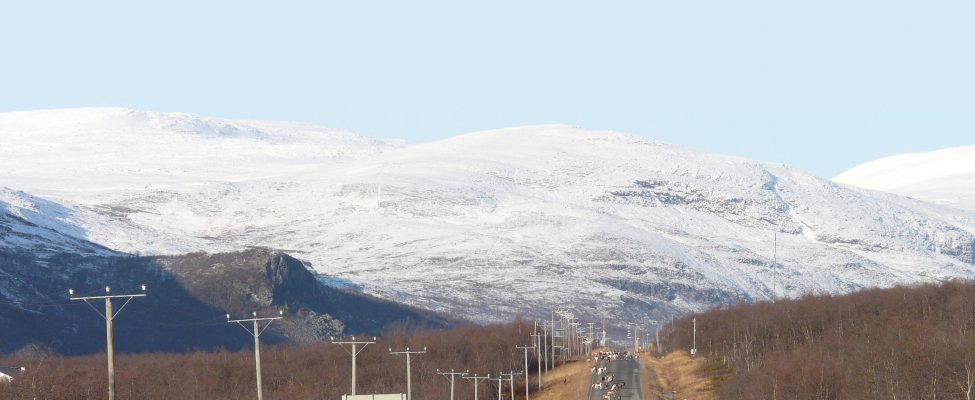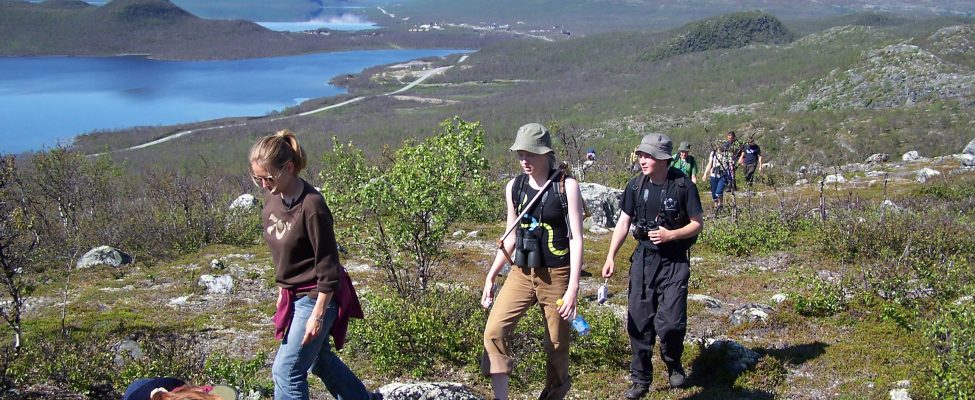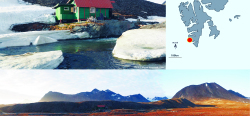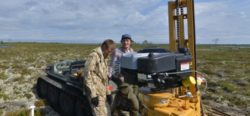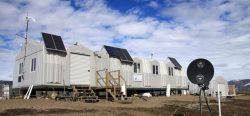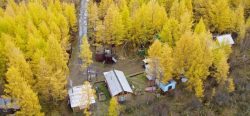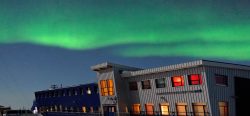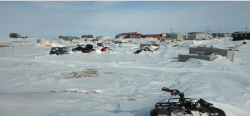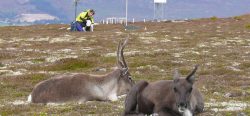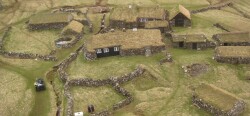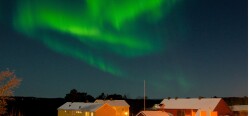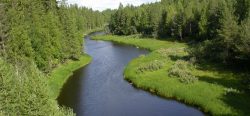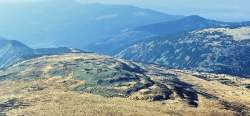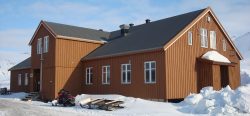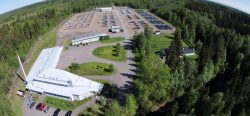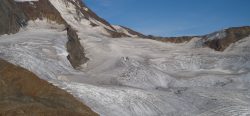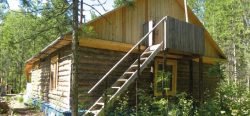STATION NAME AND OWNER
The Kilpisjärvi Biological Station belongs to the University of Helsinki (Faculty of Biological and Environmental Sciences).
LOCATION
The station is situated in the community of Enontekiö in the northwestern part of Finnish Lapland (69°03’ N, 20°50’ E) on the shore of Lake Kilpisjärvi at 475 m a.s.l. close to Sweden and Norway.
BIODIVERSITY AND NATURAL ENVIRONMENT
The landscape around the station is dominated by “Fjells” (mountains or high plateaus above the tree line) extending into the Scandinavian mountain range, e.g. Fjell Saana (1029 m a.s.l.) and Pikku-Malla (738 m a.s.l.). The research station lies ca100 km north of continuous coniferousCone-bearing, as in coniferous trees such as pines and firs.... More forest and belongs to the sub-alpine birch forest zone, with mountain birch being the dominant plant species. The area is dominated by a wide range of ecosystems from mountain birch forest at low altitude (480-600 m) to alpine tundraA type of ecosystem in which tree growth is limited by low temperatures. The origin of the word is from from the Kildin Sami word t?ndâr, meaning "uplands" or "treeless mountain tract". In the northern... More (above 600 m). The majority of the area is a mosaic of treeless alpine heathA type of shrubland habitat mainly consisting of low growing, woody plants (shrubs). Heaths occur on acidic soils and in dry conditions and are common in the Arctic and sub-arctic.... More and ponds. Due to the calcareous bedrock, the Kilpisjärvi area is a hotspot for many calcophilic and endangered mountain plant species. As a consequence, the lepidofauna in this area is exceptionally diverse (more than 340 species are recorded). The Kilpisjärvi region is also famous for rich avifauna of northern and mountainous species, like the bluethroat (Luscinia svecica), the ring ouzel (Turdus torquatus, and the dotterel (Charadrius morinellus). The Norwegian lemming (Lemmus lemmus) is the most characteristic mammal species.
HISTORY AND FACILITIES
The station with its four buildings was officially opened in 1964. In the main building, there are two lecture halls (with space for either 30 or 60 people, one of which also serves as dining room), computer room, library, kitchen, and laboratory facilities. Facilities and logistics make it possible to host international workshops and conferences at the station. Laboratories have a supply of electricity, gas, compressed air, and running water, and are equipped with refrigerator, ovens, freezers, spectrophotometer, micro- and macro-scales, microscopes, centrifuge, pH- and conductivity meters, thermometers, etc. Also a wide variety of field equipment is available, together with boats and snow scooters. The station hosts Ars Bioarctica residency program run by the BioArt Society making the station a meeting place for arts&sciences. The library contains a collection of zoological, botanical, geographical, and statistical handbooks. Telephone, fax, copy machines, and computers with access to internet are provided. WLAN is accessible in the station area. The accommodation capacity is about 50 persons, and meals are served daily at the station. There is a permanent staff of six people.
GENERAL RESEARCH AND DATABASES
Widely respected long-term follow-up studies form the core of the scientific activities at the station. The longest observation series (>50 years) are on fluctuations of small rodent densities. Population dynamics of passerines have been monitored since 1957. Long-term research projects also include the periodicity in quality and quantity of vegetation in the mountain region. Effects of environmental changes have been monitored for instance in the International TundraA type of ecosystem in which tree growth is limited by low temperatures. The origin of the word is from from the Kildin Sami word t?ndâr, meaning "uplands" or "treeless mountain tract". In the northern... More Experiment (ITEX). The specifi clong-term studies are backed by more extensive studies on climateThe average weather we would expect over a long period of time (seasons, years, decades). Climate varies from place-to-place across the Earth. Climate is determined by long-term (over at least... More, vegetation, soils, rodents, birds, predators, etc. Limnology is a rising branch of research. Lately research activities have extended from animal and botanical ecologyThe study of living organisms in their environment, including where they are found and how they interact with their physical environment and with each other, for example through food webs.... More to hydrobiological and paleolimnological research. Projects such as MOLAR, CHILL, LAPBIAT and SCANNET have been carried out in Kilpisjärvi in addition to regular studies on geographyThe study of the Earth, such as places, landforms, people and processes by which the Earth changes over time. Geography is divided into two main branches: human geography and physical... More and geophysics. The Kilpisjärvi Biological Station is the Finnish representative in the ITEX-project. Since 2007 the station has been part of the Finnish Northern LTSER program, in which data from long-term follow-up studies will be organised and digitized in an EU-funded LTER-project. A bibliography of publications arising from research at the station is available. There is an also an extensive collection of climateThe average weather we would expect over a long period of time (seasons, years, decades). Climate varies from place-to-place across the Earth. Climate is determined by long-term (over at least... More records and biological data on plants and animals available from the station. The station publishes its own newsletter “Kilpisjärvi Notes”.
HUMAN DIMENSION
Reindeer husbandry, tourism, and research dominate in the area. Recent construction and development plans in the village may pose a threat for the future of some of the long-term studies.
ACCESS
The station is easily accessible by air or bus (via Rovaniemi). Within a two hours car journey there are two airports, Enontekiö in Finland and Tromsø in Norway. Also Kiruna airport in Sweden is relatively close to the station.
